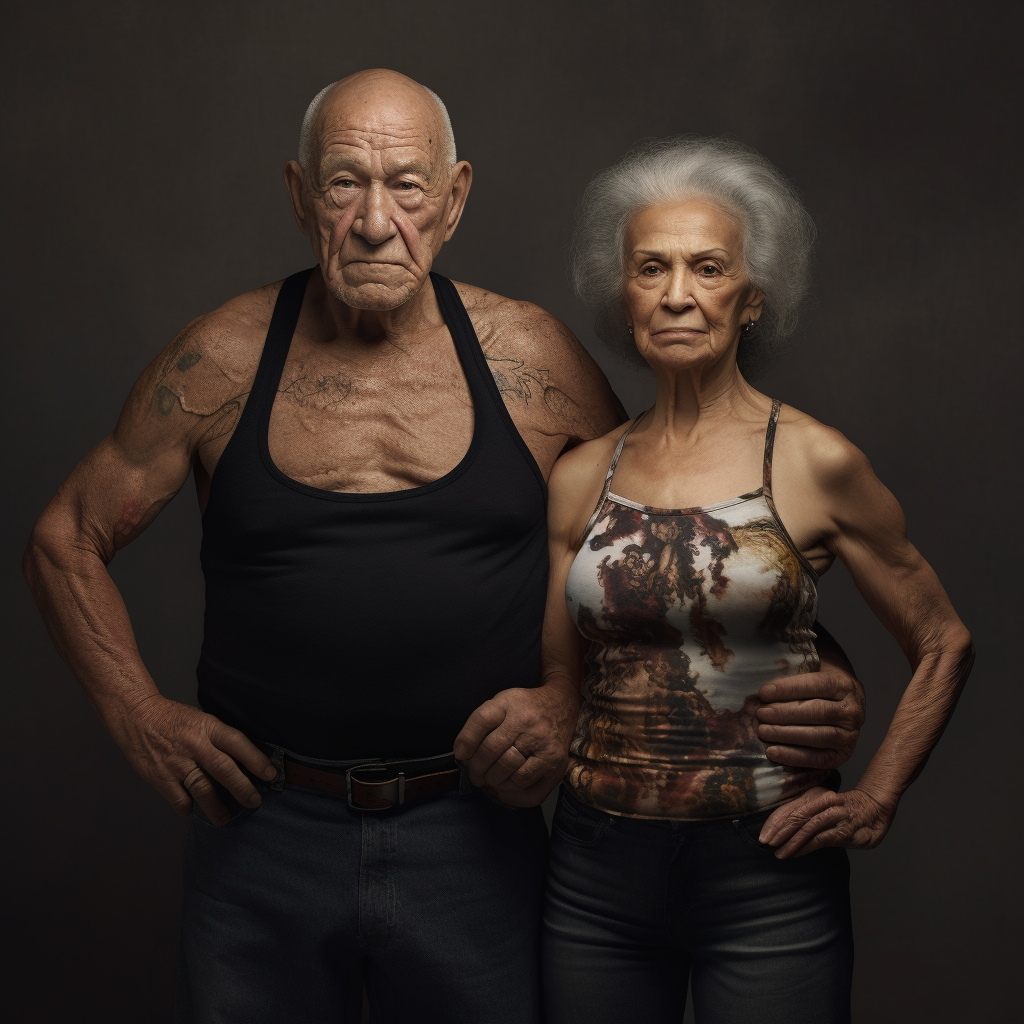Am I too old to grow muscle?
Sarcopenia increases the risk of falls, fractures, chronic diseases, and loss of independence.
So is it too late to grow muscle and battle sarcopenia.?
Sorry, what is sarcopenia
Research shows that individuals in their 60s and beyond can develop muscles as big and strong as those of an average 40-year-old through weight training.
Despite the age-related changes that occur, such as slowed metabolism, reduced muscle mass, and declining hormonal and neurological responses, building lean muscle mass is indeed achievable as you age. Patience and perseverance are essential, as the process of regaining and strengthening muscles may take longer due to slower bodily functions.
Hard work and dedication are still required!
As Sarcopenia is not addressed in the UK we refer here to many USA studies. For example studies conducted by the UAB Center for Exercise Medicine at the University of Alabama demonstrate that supervised weight-training programs have enabled individuals in their 60s and 70s to build muscle and increase strength.
The process of muscle rebuilding is similar for older individuals as it is for younger people. Resistance training during weight lifting creates micro-tears in muscle fibers, which play a crucial role in muscle development. As the body recovers, it heals these micro-tears and utilizes the protein consumed to aid in muscle repair and growth.
While younger individuals can generate new muscle during this process, older adults who have experienced muscle loss can strengthen their existing muscle fibers, resulting in larger and stronger muscles.
Consistency and progression are key for seniors!

Sarcopenia-related risk factors and Sarcopenia-related outcomes
Key points of interest/information:
Progressive resistance training at least twice a week can increase muscular mass and strength in fragile 75-year-olds.
Improves in eight weeks.
A research of frail 86-96-year-olds found that eight weeks of high-intensity progressive resistance training increased mid-thigh muscular area by about 10% and leg strength by 180%.
It is worth noting that losing weight may cause muscle loss in older persons, which could harm their health.
Progressive resistance exercise and weight loss reduce muscle loss. Weight loss exercise can also prevent bone loss and fractures in elderly persons.
The paper suggests two weekly progressive resistance training sessions targeting 8-10 muscle groups. Start at 30-40% of maximum effort and work up to 70-80%. Before starting a moderate-to-high-intensity progressive resistance training programme, see a doctor or certified trainer.
In conclusion, it’s never too late to develop muscle and fight sarcopenia. Progressive resistance exercise can increase muscular growth and strength in older persons. As Socrates said, mobility and exercise preserve body function and independence, therefore muscle health is stressed.

To get started on a muscle-building exercise routine, professional guidance, such as a few sessions with a personal trainer, is recommended if feasible. Start with eight to twelve repetitions at a weight that exhausts the muscles by the final few repetitions. Gradually increase the number of sets and frequency of exercise. Individuals with joint issues may require modifications. If a personal trainer is not available, seek initial guidance at the gym.
Listen to your body and refrain from pushing through pain or discomfort. The belief of “no pain, no gain” is false.
Stay hydrated by drinking water before and after exercising, which is particularly important for seniors who tend to drink less water to avoid frequent bathroom visits.
Maintain a healthy diet. Eating protein before and after workouts enhances muscle growth and development. While the average daily protein intake is around 0.8 grams per kilogram of body weight, individuals with sarcopenia (muscle loss) may require up to 1.2 grams per kilogram of body weight.
Choose appropriate workout attire, including sturdy sneakers with good grip and laces. Opt for loose-fitting and breathable clothing.
Engaging in group exercise provides a fun and safe environment while offering the opportunity to socialize with like-minded individuals. It helps combat isolation, which can become a problem for seniors.
Remember, it’s never too late to start building muscle and enjoying the benefits it brings.
Resistance exercise is the best technique to build and improve muscles at any age, according to study. It involves weightlifting, machine weights, resistance bands, and bodyweight workouts including push-ups, squats, and tricep dips. The article advises starting with light weights or modified movements and progressing through progressive resistance training.
Progressive resistance training at least twice a week can increase muscular mass and strength in fragile 75-year-olds. Improves in eight weeks. A research of frail 86-96-year-olds found that eight weeks of high-intensity progressive resistance training increased mid-thigh muscular area by about 10% and leg strength by 180%.
The article addresses muscle loss after weight loss. Losing weight may cause muscle loss in older persons, which could harm their health. Progressive resistance exercise and weight loss reduce muscle loss. Weight loss exercise can also prevent bone loss and fractures in elderly persons.
The paper suggests two weekly progressive resistance training sessions targeting 8-10 muscle groups. Start at 30-40% of maximum effort and work up to 70-80%. Before starting a moderate-to-high-intensity progressive resistance training programme, see a doctor or certified trainer.
In conclusion, it’s never too late to develop muscle and fight sarcopenia. Progressive resistance exercise can increase muscular growth and strength in older persons. As Socrates said, mobility and exercise preserve body function and independence, therefore muscle health is stressed.
Am I too old to grow muscle?
Read an article about what science says about sarcopenia and building strength later in life.
